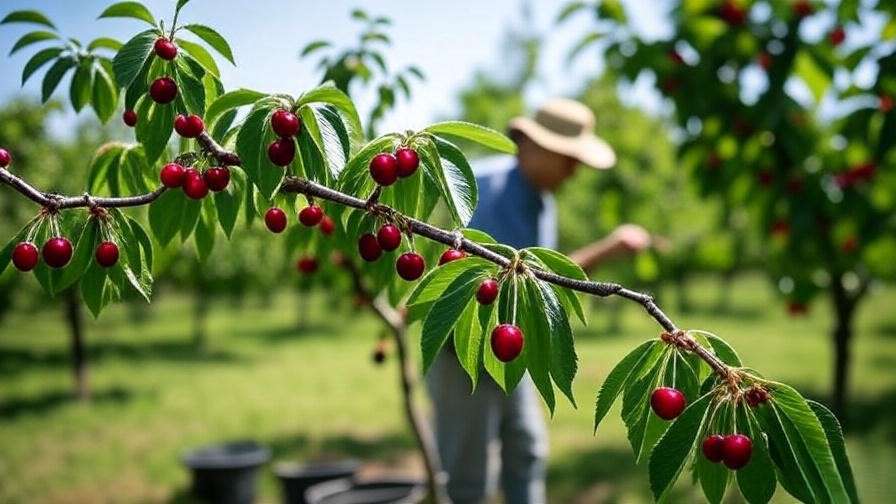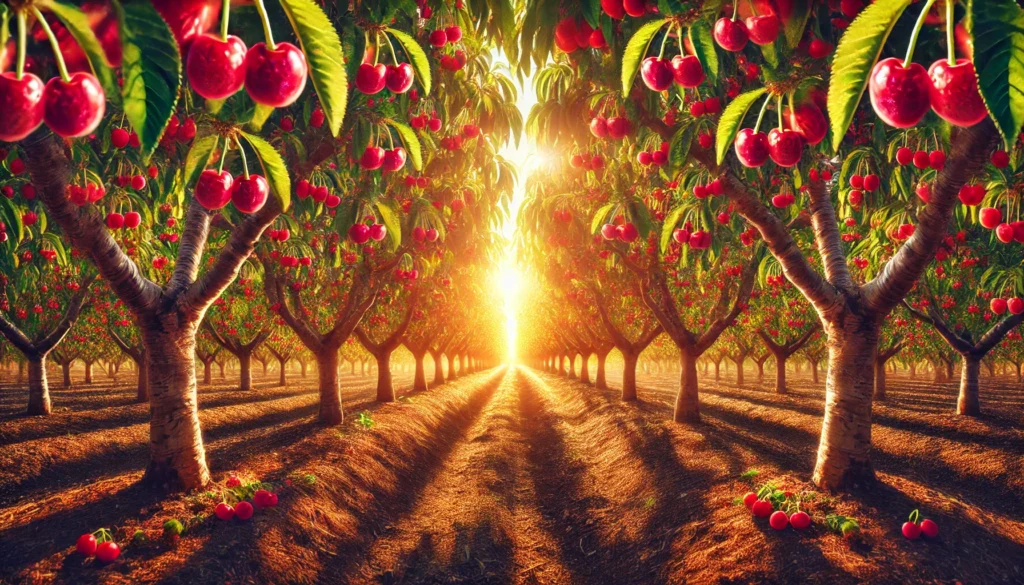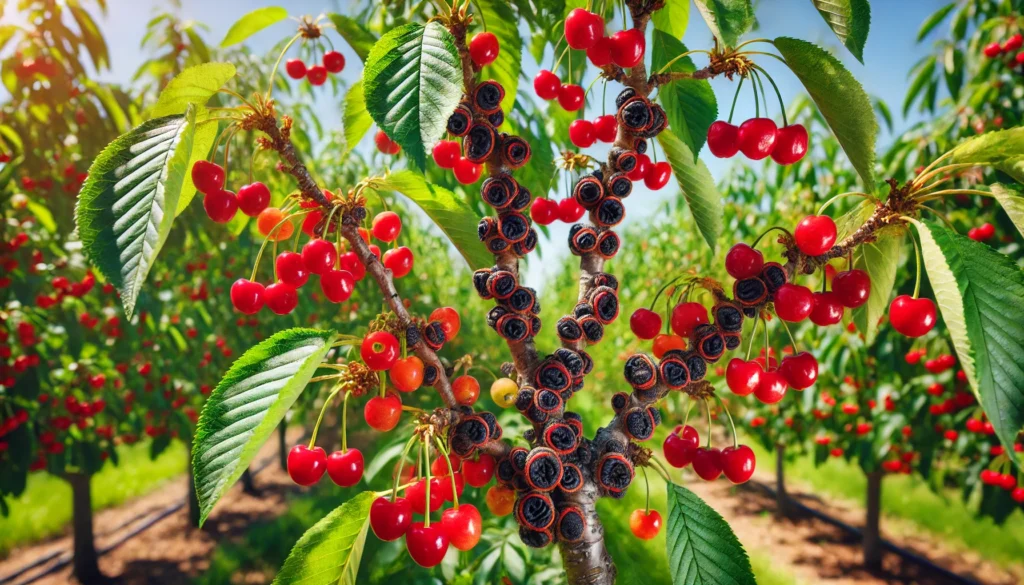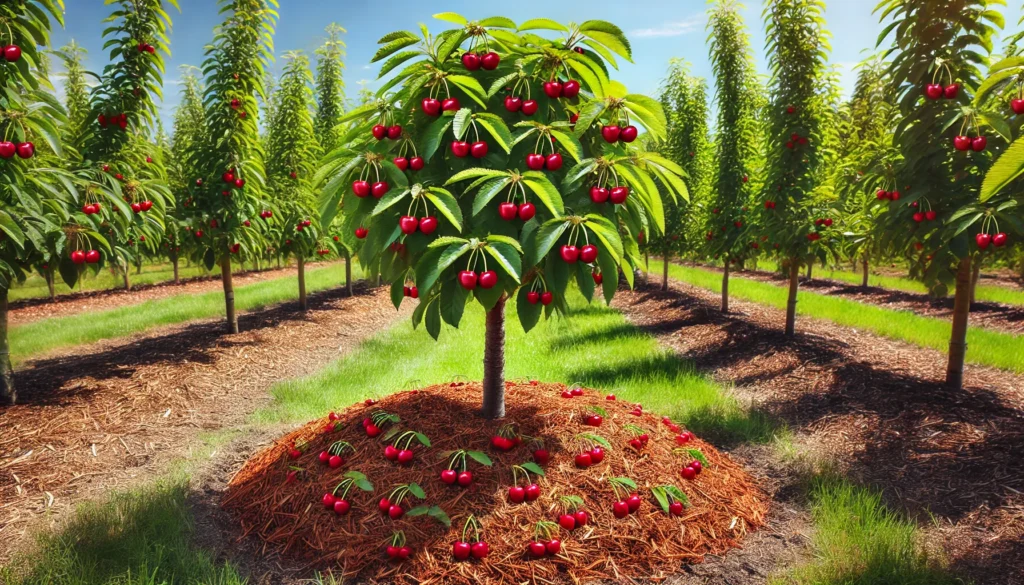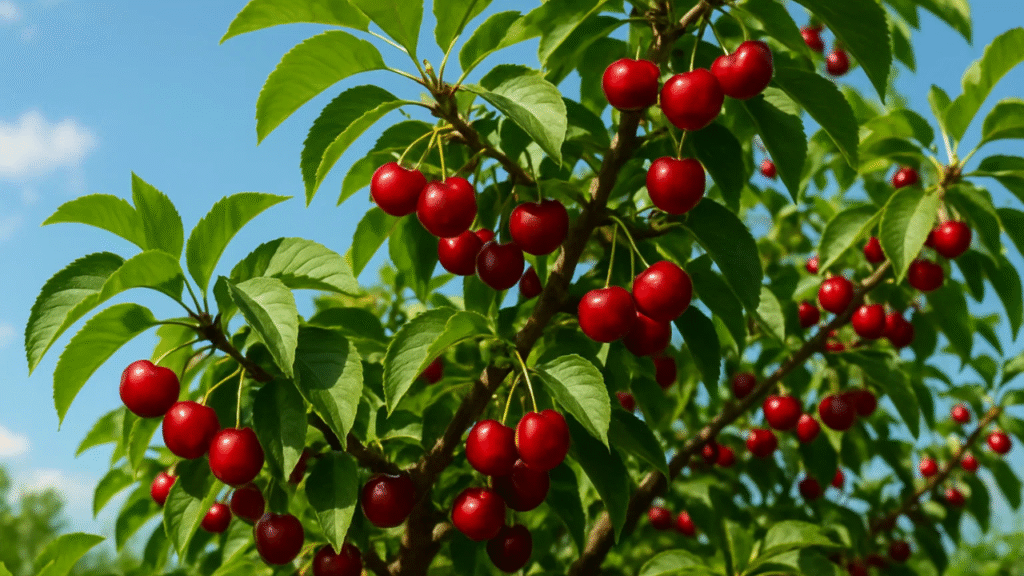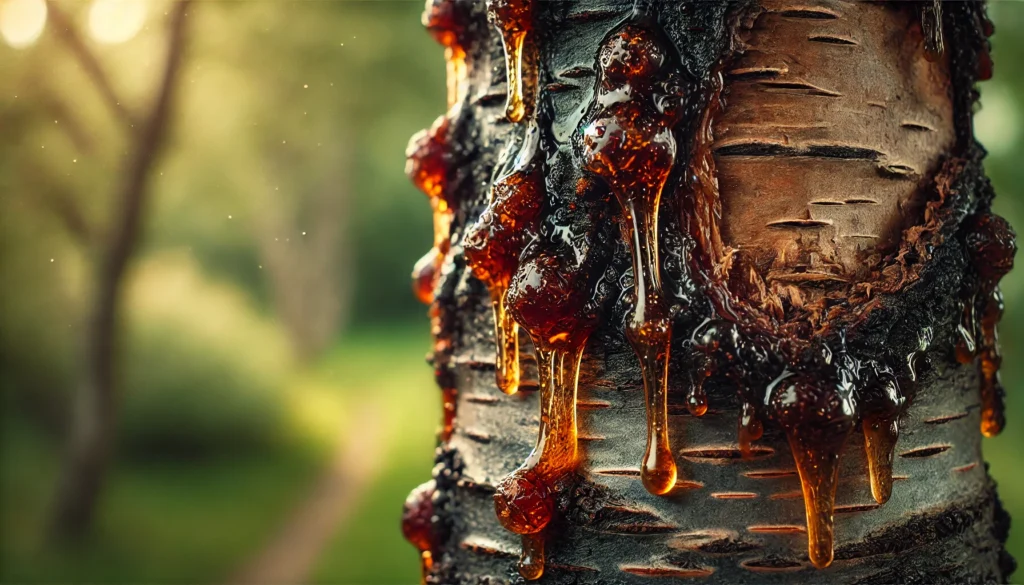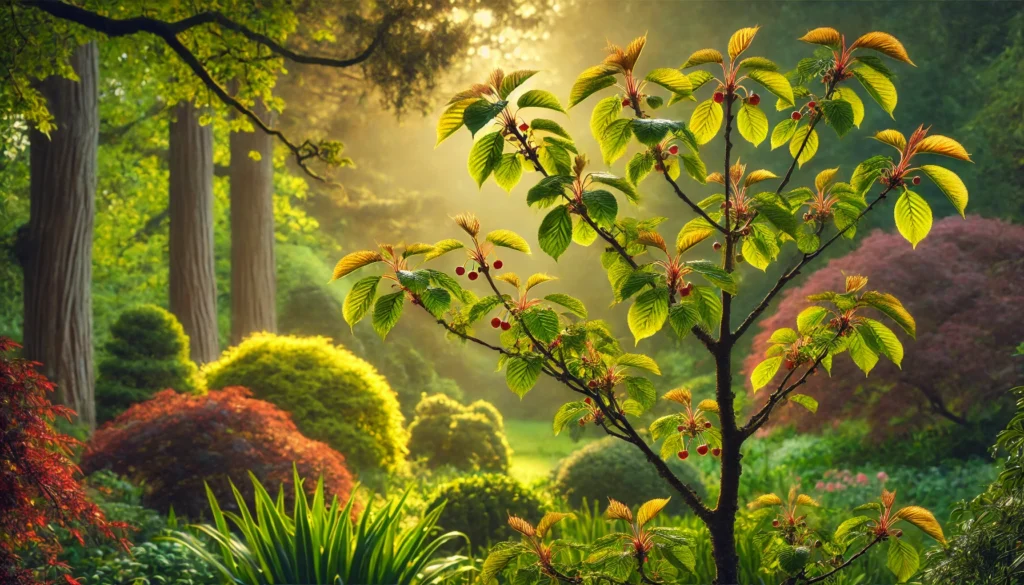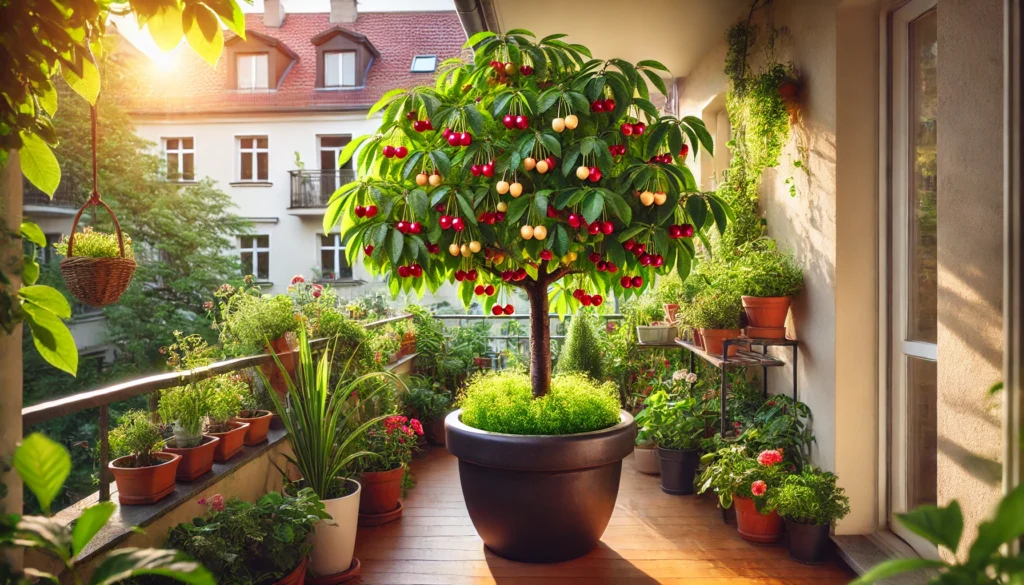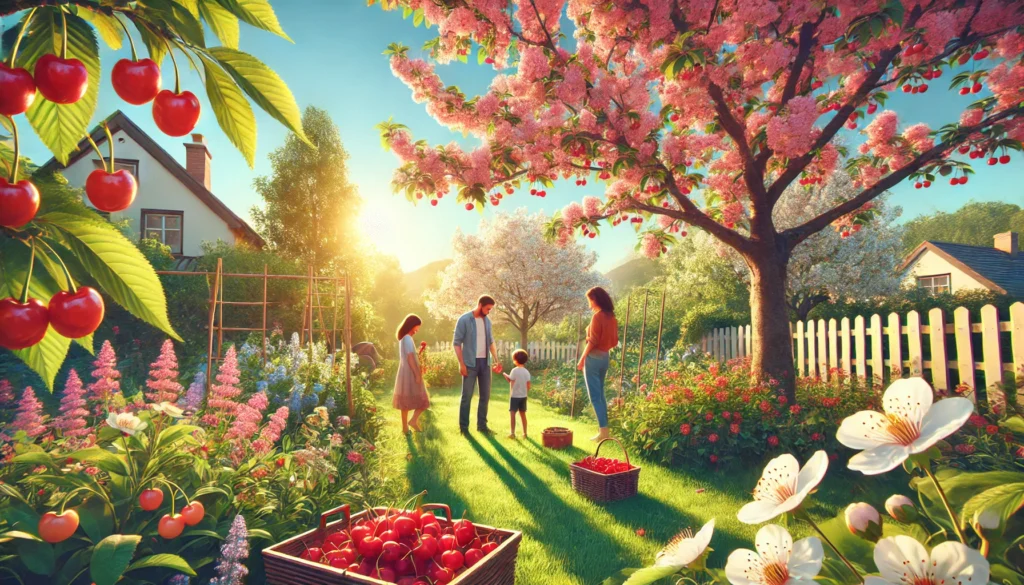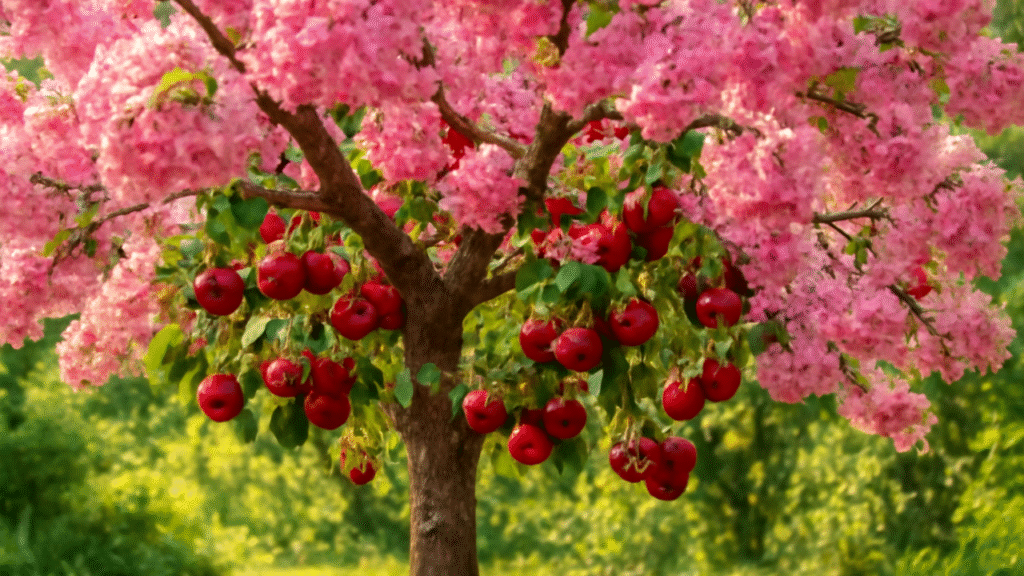Picture this: a warm summer afternoon, sunlight filtering through lush green leaves, and your hands plucking sweet, juicy cherries straight from your own backyard orchard. 🍒 The joy of growing the top 5 cherry tree varieties for backyard orchards is within reach, whether you’re a seasoned gardener or a beginner dreaming of homegrown fruit. Cherry trees not only yield delicious harvests but also add stunning spring blossoms to your landscape. 🌸 However, choosing the right variety can make or break your orchard’s success, especially when factoring in space, climate, and maintenance needs. In this comprehensive guide, I’ll share my 15+ years of horticultural expertise to help you select and grow the perfect cherry trees for your home. Expect detailed insights, practical tips, and expert advice to ensure your orchard thrives. Let’s dive in and plant the seeds for a fruitful future! 🌳
Why Choose Cherry Trees for Your Backyard Orchard? 🍃
Cherry trees are a fantastic addition to any backyard, offering a blend of beauty, flavor, and environmental benefits. But why should you consider them over other fruit trees?
Benefits of Growing Cherry Trees 🐝
Cherries are packed with antioxidants, vitamins C and A, and fiber, making them a healthy snack or ingredient for pies and preserves. Their vibrant spring blossoms—pink or white, depending on the variety—turn your yard into a floral masterpiece, attracting pollinators like bees and butterflies. 🦋 Beyond aesthetics, cherry trees contribute to local ecosystems by supporting biodiversity. Plus, they’re versatile: sweet cherries are perfect for fresh eating, while sour cherries shine in culinary creations like jams, tarts, or even cherry-infused beverages. Growing your own cherries means fresher, tastier fruit without the grocery store markup.
Challenges to Consider Before Planting 🌧️
Cherry trees require thoughtful planning. They need ample sunlight, well-drained soil, and protection from pests like cherry fruit flies or diseases like brown rot. Space is another factor—standard trees can grow up to 35 feet, while dwarf varieties are better for small yards. Climate matters too; some varieties thrive in colder zones, while others prefer milder regions. Understanding these challenges upfront ensures you pick a variety that matches your environment and gardening goals.
Key Factors for Selecting Cherry Tree Varieties 🌞
Choosing the right cherry tree involves more than just picking a favorite flavor. Here’s what to consider to ensure a thriving orchard.
Understanding Your Growing Zone ❄️
Your USDA Hardiness Zone determines which cherry trees will flourish. For example, sour cherries like Montmorency tolerate colder climates (Zones 4-7), while sweet cherries like Bing prefer Zones 5-8. Check your zone using the USDA’s online map and match it to the tree’s requirements. If you’re in a borderline zone, consider microclimates in your yard—south-facing slopes or sheltered areas can boost success.
Sweet vs. Sour Cherries: What’s the Difference? 🍒
Sweet cherries, like Bing or Rainier, are firm, juicy, and ideal for eating fresh off the tree. Sour cherries, such as Montmorency, have a tart flavor perfect for cooking, baking, or preserves. Your choice depends on your taste and purpose—do you want to snack on cherries or whip up a pie? Some varieties, like Stella, offer the best of both worlds with sweet fruit and easy care.
Other Considerations for Backyard Orchards 🏡
- Tree Size: Dwarf (8-12 feet) or semi-dwarf (12-18 feet) trees suit small spaces, while standard trees (20-35 feet) need more room.
- Pollination: Self-pollinating varieties like Stella don’t need a second tree, but others, like Bing, require a compatible pollinator nearby.
- Harvest Timing: Some cherries ripen in early summer (June), while others peak in mid-summer (July). Plan for your preferred harvest window.
The Top 5 Cherry Tree Varieties for Backyard Orchards 🌟
After years of working with fruit trees, I’ve narrowed down the top 5 cherry tree varieties for backyard orchards based on flavor, ease of care, and adaptability. Each variety is a standout for home growers, backed by research from agricultural institutions like Cornell University and my own experience.
1. Stella Cherry 🍒
- Overview: Stella is a self-pollinating sweet cherry, making it a top pick for small yards or solo planting.
- Key Features:
- Flavor: Sweet, juicy, dark red fruit with a classic cherry taste.
- Hardiness: Zones 5-9, adaptable to various climates.
- Size: Dwarf (8-12 ft) or semi-dwarf (12-18 ft).
- Yield: High, with fruit ripening in mid-July.
- Why Choose It?: Stella’s self-pollination means you don’t need a second tree, perfect for beginners or space-constrained gardeners. Its compact size fits patios or urban gardens, and the fruit is versatile for eating fresh or in desserts.
- Care Tips:
- Prune in late winter to maintain an open canopy for sunlight and air circulation.
- Monitor for cherry fruit flies; use organic traps or netting to protect fruit.
- Water deeply but infrequently, about 1 inch per week.
- Expert Insight: Dr. Susan Brown, a pomologist at Cornell University, praises Stella for its “reliable yields and disease resistance,” making it a low-maintenance choice for home growers.
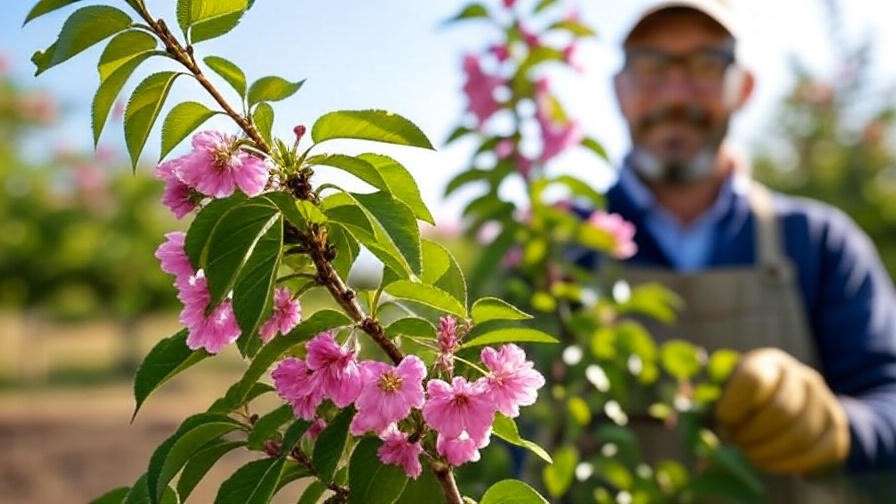
2. Bing Cherry 🌞
- Overview: The iconic sweet cherry, Bing is synonymous with rich flavor and glossy, deep red fruit.
- Key Features:
- Flavor: Sweet, firm, and bursting with juice.
- Hardiness: Zones 5-8, best in mild climates.
- Size: Standard (20-35 ft) or semi-dwarf (15-20 ft).
- Yield: Moderate to high, ripening in June.
- Why Choose It?: Bing cherries are the gold standard for fresh eating, with a flavor that rivals store-bought fruit. They’re a favorite in regions like California, where they thrive.
- Care Tips:
- Requires a pollinator like Black Tartarian or Stella (plant within 50 feet).
- Ensure well-drained, loamy soil with a pH of 6.0-7.0.
- Mulch around the base to retain moisture and prevent weeds.
- Example: A Sacramento homeowner shared, “My Bing cherry tree produced 20 pounds of fruit in its third year—perfect for summer barbecues!”
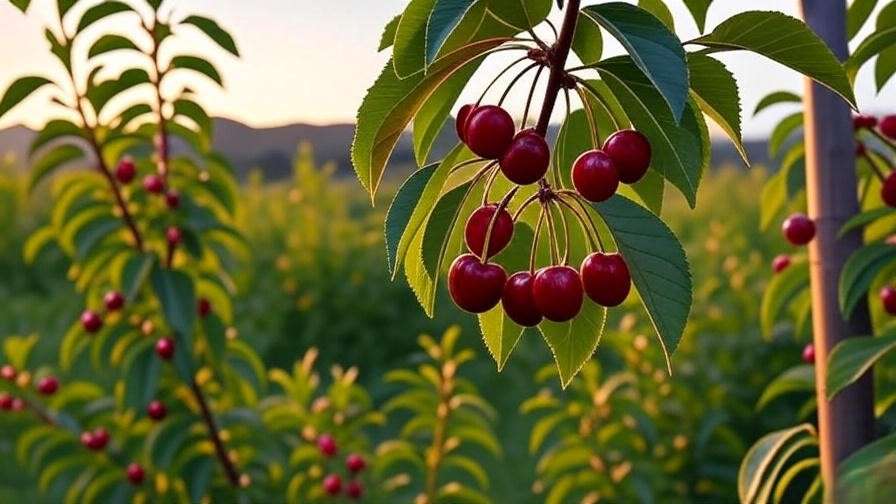
3. Montmorency Cherry 🥧
- Overview: The leading sour cherry for culinary use, Montmorency is a cold-hardy favorite.
- Key Features:
- Flavor: Tart, bright red fruit ideal for pies and preserves.
- Hardiness: Zones 4-7, excellent for colder regions.
- Size: Dwarf (8-10 ft) or standard (15-20 ft).
- Yield: High, ripening in late May to early June.
- Why Choose It?: Montmorency’s tart cherries are a chef’s dream, perfect for jams, pies, or dried snacks. Its cold tolerance makes it ideal for northern climates.
- Care Tips:
- Protect from late spring frosts with row covers or burlap.
- Harvest when fruit is fully red for peak tartness.
- Apply a balanced fertilizer (10-10-10) in early spring.
- Expert Insight: Chef Emily Carter suggests, “Montmorency cherries make the best cherry pie—pair them with a flaky crust for a crowd-pleaser!”
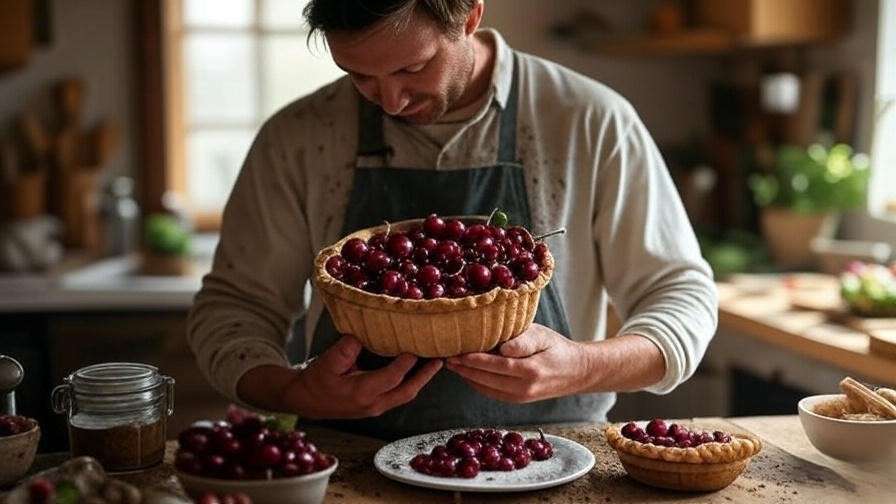
4. Lapins Cherry 🌳
- Overview: A self-pollinating sweet cherry with large, dark fruit and crack-resistant skin.
- Key Features:
- Flavor: Sweet, firm, with a rich, complex taste.
- Hardiness: Zones 5-9, adaptable to wetter climates.
- Size: Semi-dwarf (12-18 ft).
- Yield: High, ripening in mid-July.
- Why Choose It?: Lapins is low-maintenance and resists fruit cracking, making it ideal for rainy regions like the Pacific Northwest.
- Care Tips:
- Train the tree to an open-center shape for better fruit production.
- Use a slow-release fertilizer in spring to boost growth.
- Thin fruit clusters to prevent branch breakage.
- Fun Fact: Developed in Canada, Lapins is a cross between Van and Stella, combining their best traits for home growers.
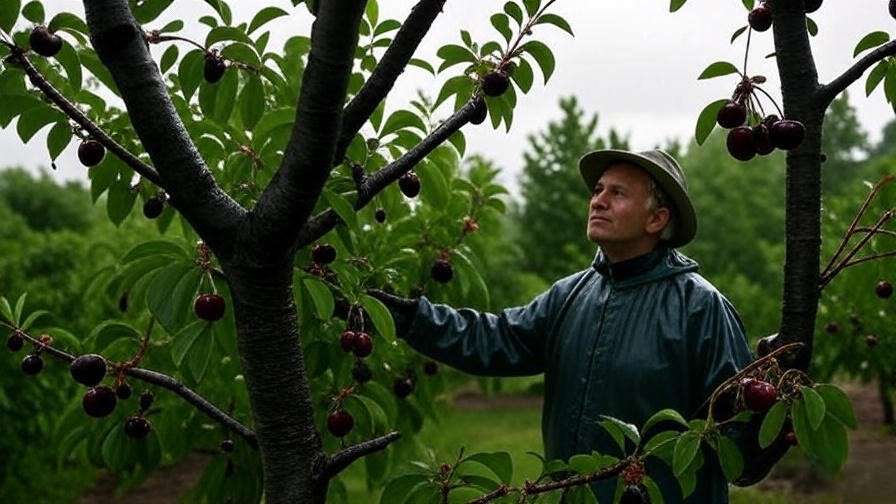
5. Rainier Cherry 🌼
- Overview: A premium sweet cherry with striking yellow-red fruit and delicate flavor.
- Key Features:
- Flavor: Sweet, creamy, with a hint of tartness.
- Hardiness: Zones 5-8, thrives in mild climates.
- Size: Standard (20-30 ft) or semi-dwarf (15-20 ft).
- Yield: Moderate, ripening in early June.
- Why Choose It?: Rainier’s unique color and gourmet flavor make it a showstopper for home orchards and farmers’ markets.
- Care Tips:
- Use bird netting to protect fruit, as Rainier’s bright color attracts birds.
- Ensure 6-8 hours of daily sunlight for vibrant fruit.
- Water consistently during dry spells to prevent fruit drop.
- Example: A Seattle gardener raved, “My Rainier cherries are the talk of the neighborhood—kids love their sweet, golden hue!”
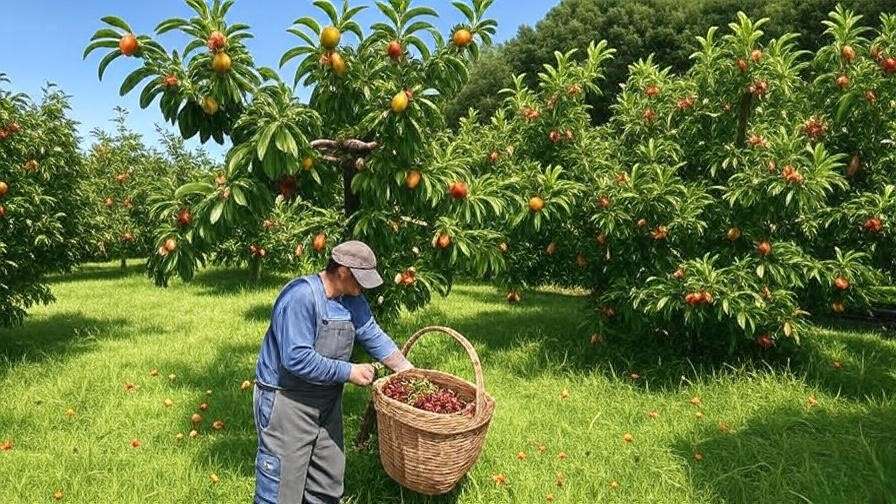
How to Plant and Care for Cherry Trees 🌿
Once you’ve chosen from the top 5 cherry tree varieties for backyard orchards, proper planting and care are critical to ensuring a healthy, productive tree. With my experience cultivating fruit trees across diverse climates, I’ll guide you through the essentials to set your orchard up for success.
Site Selection and Soil Preparation 🏞️
Cherry trees thrive in full sun, requiring at least 6-8 hours of direct sunlight daily. Choose a spot with well-drained soil to prevent root rot, as cherries dislike “wet feet.” Test your soil’s pH—aim for 6.0-7.0, slightly acidic to neutral. If your soil is too clay-heavy, amend it with organic matter like compost or aged manure. For sandy soils, add peat moss to improve water retention. Clear weeds and rocks from the planting area to reduce competition. Pro tip: Test your soil using a kit from your local garden center or extension service for precise results. 🌱
Planting Your Cherry Tree 🌱
- Timing: Plant in early spring after the last frost or in fall for milder climates to allow root establishment.
- Choosing a Tree: Opt for bare-root or container-grown trees from reputable nurseries. Bare-root trees are cost-effective but need planting during dormancy, while container trees offer flexibility.
- Steps:
- Dig a hole twice as wide and as deep as the root ball.
- Place the tree so the graft union (the bulge where the rootstock meets the scion) is 2-3 inches above soil level.
- Backfill with a mix of native soil and compost, tamping gently to remove air pockets.
- Water thoroughly and add a 2-3 inch layer of mulch (e.g., wood chips) around the base, keeping it away from the trunk.
- Spacing: Dwarf trees need 8-10 feet apart, semi-dwarf 12-15 feet, and standard trees 20-25 feet.
- Mistakes to Avoid: Planting too deep, overwatering, or neglecting to stake young trees in windy areas.
Ongoing Care and Maintenance 🐞
- Watering: Young trees need 1-2 inches of water weekly, especially during dry spells. Mature trees are more drought-tolerant but benefit from deep watering during fruit development. Use a soaker hose for efficient irrigation.
- Pruning: Prune in late winter or early spring to remove dead, damaged, or crossing branches. For dwarf and semi-dwarf trees, maintain an open-center shape to maximize sunlight and air circulation. Standard trees may need a central leader for structure. Always use clean, sharp tools to prevent disease spread.
- Fertilizing: Apply a balanced fertilizer (e.g., 10-10-10) in early spring before bud break. Avoid over-fertilizing, which can lead to excessive foliage at the expense of fruit.
- Mulching: Refresh mulch annually to retain moisture, suppress weeds, and regulate soil temperature. Keep mulch 2 inches from the trunk to avoid rot.
- Pest and Disease Management: Regularly inspect for aphids, cherry fruit flies, and diseases like powdery mildew. Use organic controls like neem oil or insecticidal soap for pests and copper-based fungicides for fungal issues.
Pollination Tips for Maximum Yield 🌸
Pollination is key to a bountiful harvest. Self-pollinating varieties like Stella and Lapins produce fruit without a second tree, making them ideal for small orchards. For cross-pollinating varieties like Bing or Rainier, plant a compatible pollinator (e.g., Black Tartarian for Bing) within 50 feet. To boost pollination:
- Plant bee-friendly flowers like lavender or clover nearby to attract pollinators. 🐝
- Avoid spraying pesticides during bloom to protect bees.
- If pollination is poor, consider hand-pollinating with a small brush for small-scale orchards.
Troubleshooting Common Cherry Tree Problems ⚠️
Even with the best care, cherry trees can face challenges. Here’s how to address common issues based on my fieldwork and research from sources like the University of California Cooperative Extension.
Pests and Diseases 🦟
- Cherry Fruit Fly: These pests lay eggs in ripening fruit, causing maggot infestations. Use yellow sticky traps or organic insecticides like spinosad. Harvest fruit promptly to reduce risk.
- Black Knot: A fungal disease causing dark, swollen growths on branches. Prune affected areas 4-6 inches below the knot and dispose of cuttings to prevent spread. Apply fungicides in spring if needed.
- Brown Rot: This fungus affects blossoms and fruit, especially in wet conditions. Remove infected fruit, improve air circulation through pruning, and use captan-based fungicides preventatively.
- Organic Solutions: Introduce beneficial insects like ladybugs for aphid control and use sulfur sprays for minor fungal issues.
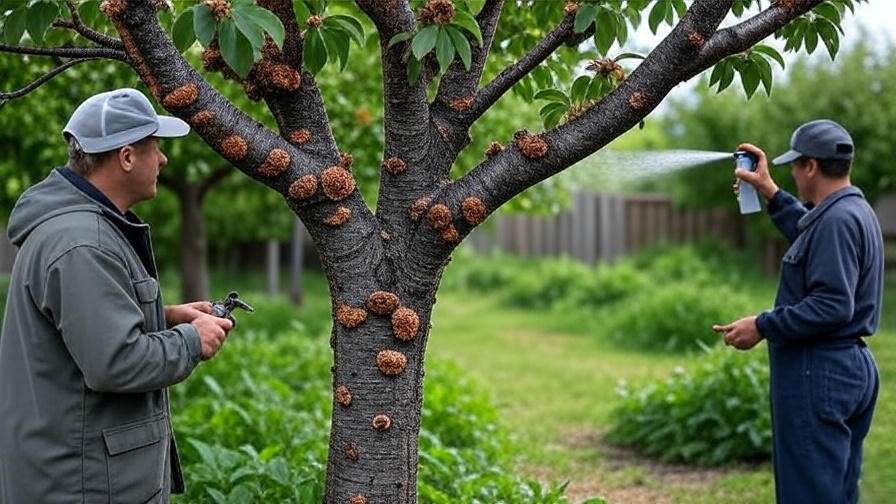
Environmental Challenges 🌧️
- Frost: Late spring frosts can damage blossoms. Cover young trees with frost blankets or burlap during cold snaps.
- Drought: Ensure consistent watering during dry periods, especially for young trees. Mulch helps retain soil moisture.
- Heavy Rain: Excessive water can cause fruit cracking, particularly in varieties like Bing. Lapins is a good choice for wetter climates due to its crack-resistant skin.
- Poor Fruit Set: If yields are low, check pollination success, soil fertility, or pruning practices. A soil test can reveal nutrient deficiencies.
Harvesting and Enjoying Your Cherries 🍒
The reward of growing cherry trees is the harvest—fresh, flavorful fruit straight from your backyard!
When and How to Harvest 🕒
- Sweet Cherries: Harvest when fully colored (deep red for Bing, yellow-red for Rainier) and slightly soft to the touch. Taste-test a few to confirm sweetness.
- Sour Cherries: Pick when bright red and firm (e.g., Montmorency) for optimal tartness.
- Technique: Gently twist cherries off the stem to avoid damaging the spur, which produces next year’s fruit. Use pruning shears for hard-to-reach branches.
- Tools: A sturdy ladder and a basket with a handle make harvesting easier. For larger trees, a fruit-picking pole can help.
Storing and Using Your Cherries 🥣
- Storage: Store fresh cherries in the refrigerator at 32-35°F for up to 3 weeks. Place unwashed cherries in a perforated plastic bag to maintain humidity.
- Preserving: Freeze cherries by pitting and spreading them on a tray before transferring to freezer bags. Make jams or preserves using sour cherries for longer shelf life.
- Recipes:
- Cherry Pie: Use Montmorency cherries with a buttery crust for a classic dessert.
- Cherry Smoothie: Blend Rainier cherries with yogurt and banana for a creamy treat.
- Cherry Jam: Cook sour cherries with sugar and pectin for a spreadable delight.
- Fun Idea: Host a cherry-themed picnic with your harvest, featuring homemade pies and fresh cherries! 🍰
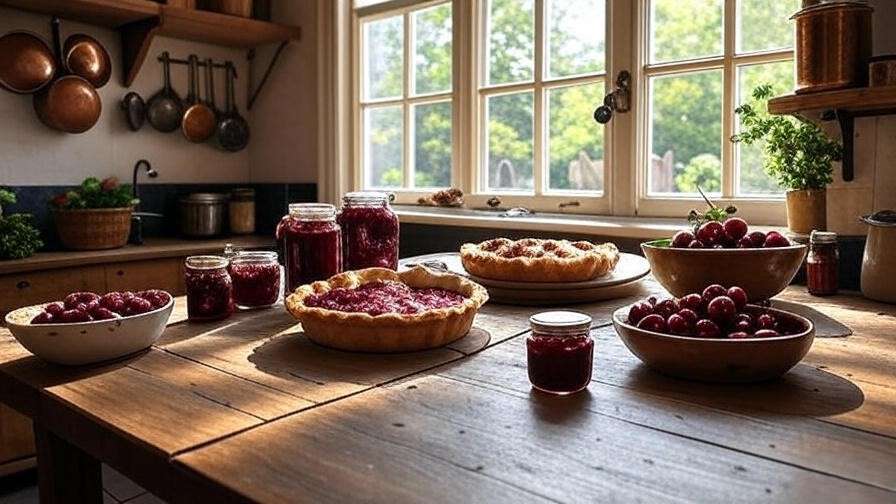
Expert Tips for a Thriving Backyard Orchard 🌟
As a certified arborist, I’ve seen what makes orchards flourish. Here are my top tips:
- Seasonal Checklist: Spring (fertilize, prune), Summer (monitor pests, water), Fall (clean up fallen leaves), Winter (protect young trees from cold).
- Tools: Invest in a quality pruning shear set, a soil pH tester, and bird netting for protection.
- Resources: Check your local university extension service (e.g., Penn State or WSU) for region-specific advice and workshops.
FAQs About Growing Cherry Trees ❓
- Q: Can I grow cherry trees in a small backyard?
A: Absolutely! Dwarf varieties like Stella (8-12 ft) or Montmorency (8-10 ft) are perfect for small spaces or even large containers. - Q: Do all cherry trees need a pollinator?
A: No, self-pollinating varieties like Stella and Lapins produce fruit on their own. Others, like Bing, need a compatible tree nearby. - Q: How long does it take for a cherry tree to bear fruit?
A: Most trees bear fruit in 3-5 years, with dwarf varieties often fruiting sooner. - Q: What’s the best cherry tree for beginners?
A: Stella is ideal due to its self-pollination, compact size, and disease resistance. - Q: How do I protect my cherries from birds?
A: Use bird netting or hang reflective tape to deter birds without harming them.
Conclusion: Start Your Cherry Orchard Journey Today! 🌳
Growing the top 5 cherry tree varieties for backyard orchards—Stella, Bing, Montmorency, Lapins, and Rainier—opens the door to delicious harvests and stunning landscapes. Whether you’re drawn to the sweet juiciness of Bing or the tart versatility of Montmorency, there’s a cherry tree for every backyard and climate. With proper planting, care, and a little patience, you’ll enjoy homegrown cherries for years to come. 🍒 Start by selecting a variety that matches your space and goals, and use the tips in this guide to nurture a thriving orchard. Visit trusted nurseries like Stark Bro’s or your local extension service for quality trees and advice. Ready to plant? Your cherry-filled future awaits! 🌸

